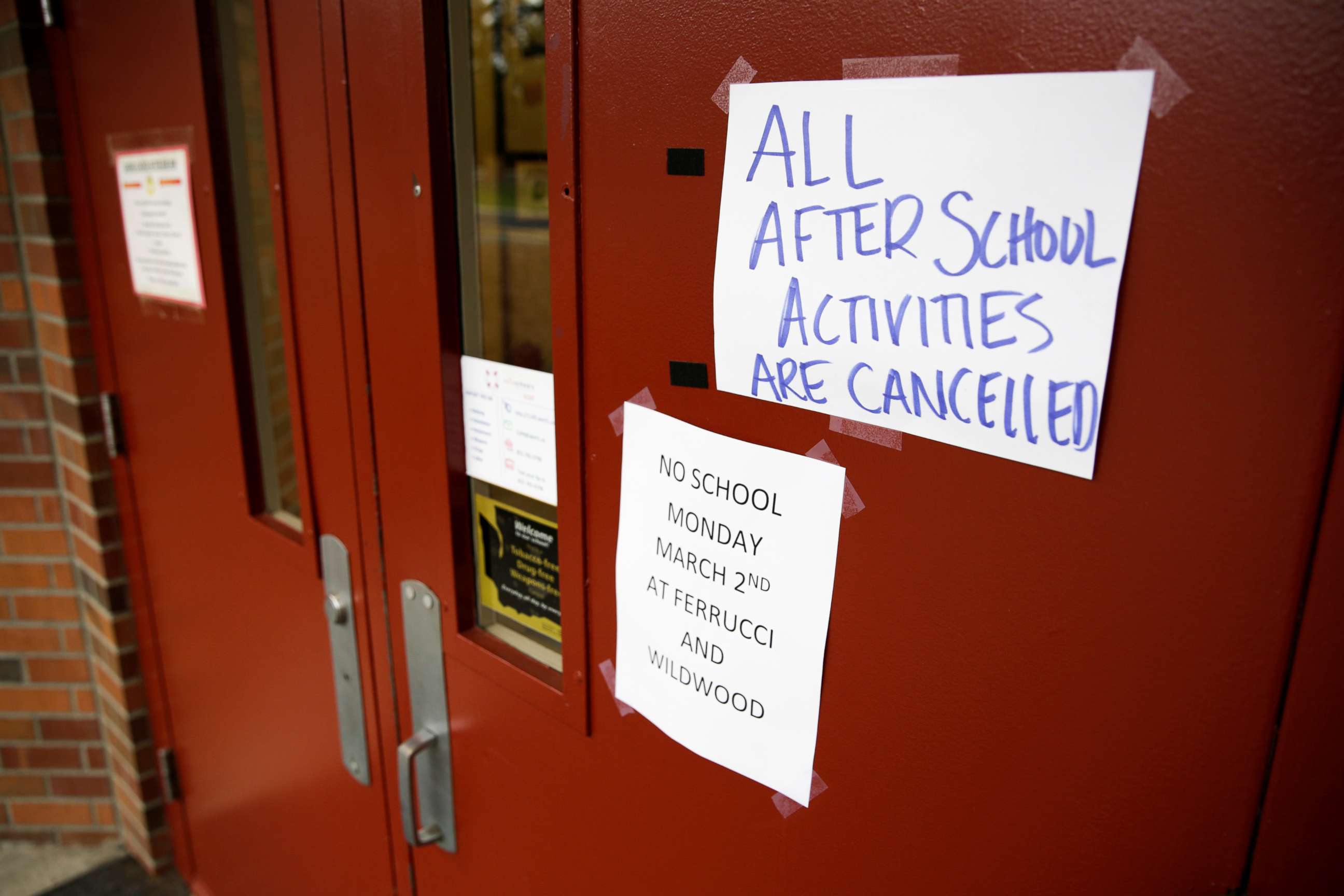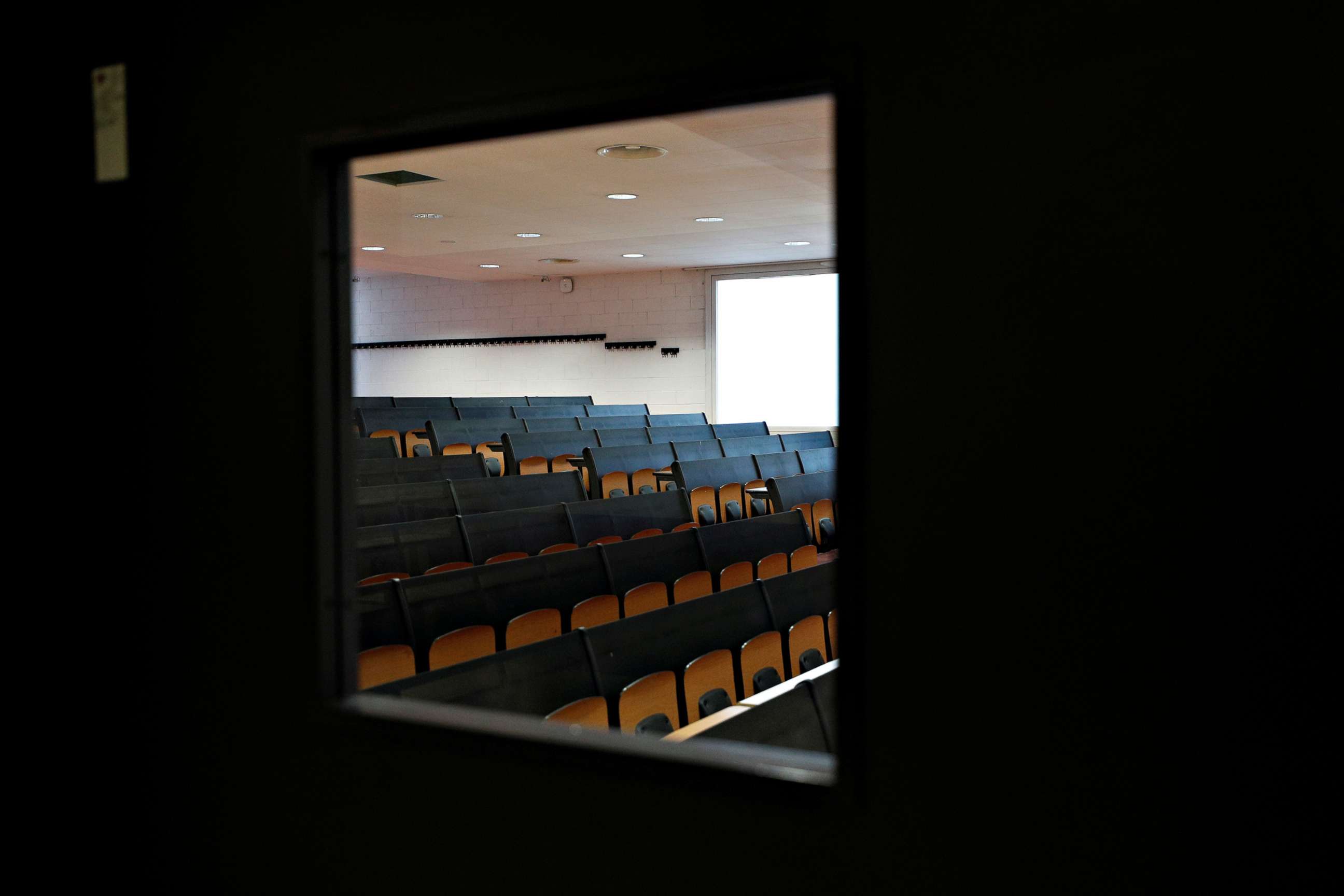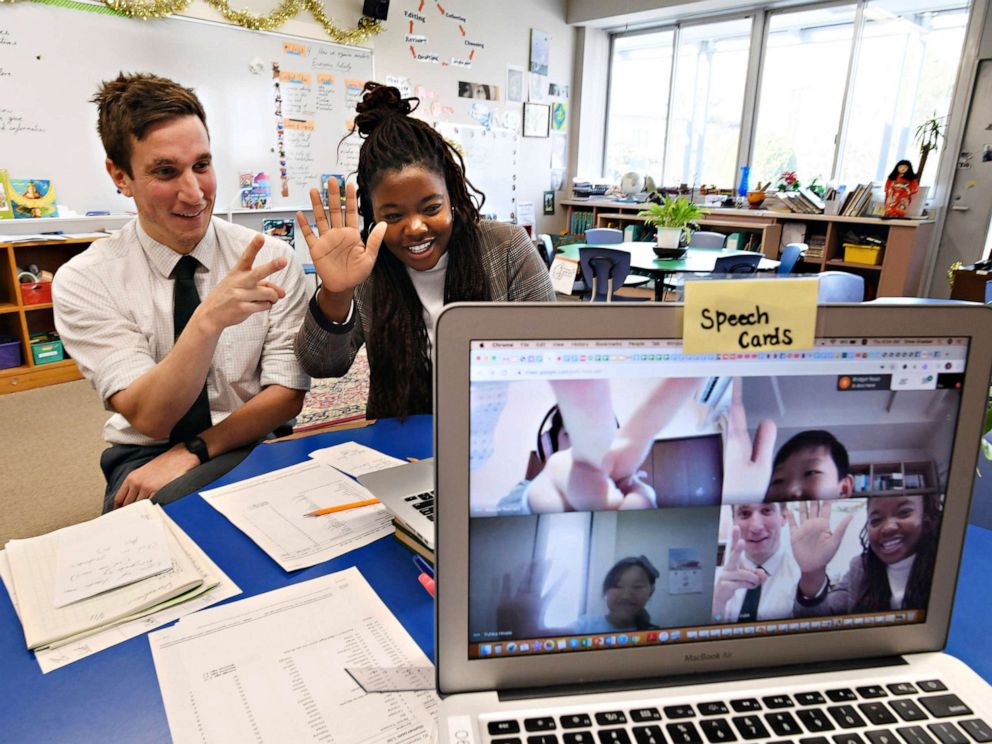The global impact of coronavirus on education
More than 290 million students have been disrupted worldwide by COVID-19.
Educators and students around the world are feeling the extraordinary ripple effect of the novel coronavirus as schools shut down amid the public health emergency.
While health officials scramble to get a grip on multiple outbreaks, here is how education systems have responded.

Schools close around the world
There are school closures of some kind in 22 countries on three continents with hundreds of millions of students around the world facing upheaval, including 13 countries that have shut schools nationwide.
The United Nations has warned of the unparalleled scale and speed of the educational disruption being caused by coronavirus.
Currently, school closures in over a dozen countries due to the COVID-19 outbreak have disrupted the education of at least 290.5 million students worldwide, according to the United Nations Educational, Scientific and Cultural Organization.
"We are working with countries to assure the continuity of learning for all, especially disadvantaged children and youth who tend to be the hardest hit by school closures," UNESCO Director-General Audrey Azoulay said in a statement Wednesday. "While temporary school closures as a result of health and other crises are not new unfortunately, the global scale and speed of the current educational disruption is unparalleled and, if prolonged, could threaten the right to education."

Italy
Lucia Azzolina, Italy's Education Minister, announced Wednesday that all schools would be closed nationwide until March 15.
More than 3,900 cases of coronavirus have been confirmed in Italy, with nearly 200 deaths, making it Europe's worst-hit country thus far.
United States
Multiple U.S. based universities have had students return home from study abroad programs in Italy after the CDC moved Italy from Alert Level 2 to Warning Level 3 on Feb. 26.
Elon University, Fairfield University, Florida International University, University of Tampa, Gonzaga University, Loyola University Chicago, Miami University-Ohio, Penn State University, Stanford University, Syracuse University, University of Maryland-College Park, University of Miami and Villanova University all wrote in statements that their students would leave Italy, or have already left Italy, for return to the U.S.
Some students, like ones at Villanova University, were asked to satisfy a 14-day quarantine period before returning to the campus.
In Washington State, where multiple cases of coronavirus have been reported, health officials have said there is no set protocol for school closures.
"Our priority is the health and safety of our students, and we are taking extra steps to prevent and contain the disease," Seattle Public Schools said in a statement Wednesday.
While there are no confirmed cases in SPS staff or students, administrators said schools in the district are following the guidelines of the Centers for Disease Control and Prevention and all district-sponsored out-of-state travel for staff and students through the end of the school year have been postponed.
At a hearing with Education Secretary Betsy DeVos, Sen. Patty Murray, D-Wash., said her own daughter’s school district was closing in response to the novel coronavirus.
"Schools across my state have had to cancel classes, one will remain closed for a least the rest of this week," Murray said Wednesday. "I had a message sent to me in the middle of the night by my own daughter that her school district is closing down for two weeks at least. So, this is really impacting families."
The New York State Department of Health has partnered with hospitals to expand testing to 1,000 tests per day statewide for the new coronavirus. The state will also institute a new cleaning protocol in schools, in the public transportation system and elsewhere, which the governor said is a good idea during flu season anyway.
There are growing concerns in the U.S. for students who rely on meal programs through school and the association of school nutrition professionals wrote a letter to the Department of Agriculture to suggest emergency options for those at risk students if their school is closed.
They suggested authorizing schools to offer grab and go meals or expanding programs intended to offer meals during the summer months as possible options.
"I believe Secretary Azar has some authority to expand aid welfare programs under the circumstances, but FEMA nor DHS do not have dollars available -- that would legally fit the description of the relief you are describing," DHS official Ken Cuccinelli said at a hearing Thursday. "So that's something that I believe is being covered and addressed in the supplemental -- that is the appropriate vehicle."
China
Just two weeks ago, China was the only country mandating school closures. The novel coronavirus, known officially as COVID-19, emerged there in the city of Wuhan in December.
Official Resources and Recommendations in the U.S.

The CDC shared interim guidance for K-12 schools on how to plan, prepare and respond to COVID-19, based on what is known about the severity and transmission of the disease.
The CDC recommends schools work directly with local health departments to share information about the disease, identify resources for students and staff, update emergency operations plans and monitor and plan for absenteeism.
"School plans should be designed to minimize disruption to teaching and learning and protect students and staff from social stigma and discrimination," the CDC said. "Plans can build on everyday practices that include strategies for before, during, and after a possible outbreak."
Schools should promote disease prevention strategy
The U.S. Department of Education has released comprehensive guidance, information and resources for schools and personnel affected by interruptions as it relates to COVID-19.
Here's a snapshot of their collaborative efforts in coordination with state and local health officials, educational agencies and other preventative steps schools can take amid the coronavirus outbreak.
- If you are sick, stay home from school.
- Avoid close contact with those who are already sick.
- Cover your nose and mouth when coughing or sneezing with a tissue or the crook of your arm.
- Wash your hands often with soap and water.
- Avoid touching eyes, nose, or mouth.
The CDC has fact sheets on COVID-19 and what to do if you're sick to help students, families and staff understand the novel coronavirus and steps to protect themselves.
What schools can do if cases of COVID-19 are identified
If schools are dismissed, the CDC recommends that schools consider the following steps: Temporarily cancel extracurricular group activities and large events; cancel or postpone events such as after-school assemblies and pep rallies, field trips, and sporting events; discourage students and staff from gathering or socializing anywhere; discourage gatherings at places like a friend’s house, a favorite restaurant, or the local shopping mall; Ensure continuity of education.
How to continue education in the case of school dismissal
Dr. Janet Taylor told ABC News it's important for parents to keep an open conversation with kids as they explore coronavirus on social media and shared tips on what to do if a child's school is closed due to the health outbreak.
"Schools are still safe places and what we want to emphasize is a sense of normalcy," the psychiatrist explained. "If your child is in a school that's closed, it's not play time you still want them to study. And again, it's a time to explain how the virus is spread and what symptoms may be like."
Taylor also added that parents should take any port of entry to talk to kids about the news.
"Check in with them -- you can explore and get information together," she said. "If they need to go to the doctor they can, but sometimes staying home may be safer for everyone."
Schools are urged to review continuity plans, including plans for the continuity of teaching and learning.
"Implement e-learning plans, including digital and distance learning options as feasible and appropriate," the CDC said. The agency also said to determine the following factors in consultation with school district officials or other relevant state or local partners.
- If a waiver is needed for state requirements of a minimum number of in-person instructional hours or school days (seat time) as a condition for funding;
- How to convert face-to-face lessons into online lessons and how to train teachers to do so;
- How to triage technical issues if faced with limited IT support and staff;
- How to encourage appropriate adult supervision while children are using distance learning approaches; and
- How to deal with the potential lack of students’ access to computers and the Internet at home.
Readiness emergency management for schools
The REMS technical assistance center has resources here from federal agency partners for both K-12 and higher education when it comes to how to handle biological hazards, like COVID-19, on campus.





